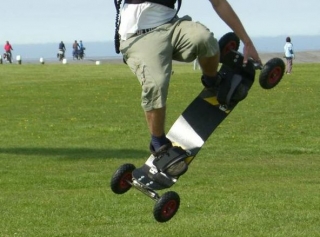One of the multi-adventure activities we suggest this time is mountain biking: a 100% guaranteed mix of sport, fun, and adrenaline. But once we decide to buy a mountain bike, it’s not enough to just purchase it, take it out occasionally, and store it in the shed. We need to carry out regular maintenance to prevent damage and ensure we can enjoy it for years to come.

Mountain Bike Tune-Up
Since we ride our off-road bikes in places where wear and tear or breakdowns are possible, regular bike maintenance is essential to monitor its condition and avoid major damage.
The first thing to remember is that each part of the bike has a specific function and therefore requires individual attention: the frame isn’t the same as the brakes, nor the fork the same as the handlebars. But one of the basic care steps you can take is washing and greasing every component of your mountain bike. For this, you’ll need a tin of solid grease, degreaser, a brush, a chain cleaner, a sponge, washing-up liquid, and a bucket of water.
Once the bike is clean and dry, it’s time to apply special bike lubricant to the drivetrain, chain, rear derailleur pulleys, etc. It’s important to use solid grease for the brake and gear cables, as well as the seat post clamp, handlebars, and stem (the latter less frequently). Keeping up with greasing is crucial, as it significantly extends your bike’s lifespan.

Another critical task is checking all bolts before a long ride or trip. Thoroughly inspect the following areas:
- Bottom bracket
- Pedals
- Derailleurs
- Headset (pay close attention)
- Brake pads
- Wheels
- Suspension

Mountain Bike Emergency Kit
- Air pump. Essential for any loss of tyre pressure.
- Spare inner tube. Don’t leave it at home—depending on the terrain, you could face serious issues. Carry glue and patches too.
- Cables. It’s wise to have both brake and gear cables.
- Toolkit. You never know what might happen on the trail. Even with a well-maintained mountain bike, you might need to fix something. What to include? Allen keys, screwdrivers, patches, chain tools, etc.
- Cable ties. These are ideal for temporarily securing broken wheel spokes if the hub fails.











